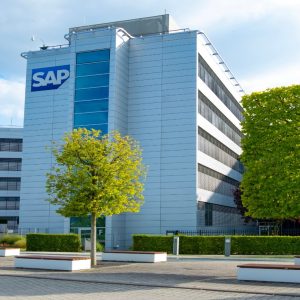
Google and Microsoft have both made significant investments in hardware as the tech giants race to try and dominate the enterprise AI market. The companies have been infusing their cloud-based productivity software with AI over recent months, and have been spending big on the chips and servers required to power these services.

The duo reported solid growth when disclosing their quarterly earnings late on Tuesday, but while investors greeted Google’s results positively, with the company’s share price rising 8%, Microsoft’s stock fell 4% in value.
Google Cloud grows on the back of AI services
The enthusiasm for Google’s results, which saw the company report higher than anticipated income of $74.6bn for the three months to the end of June, has likely been driven by the performance of its core advertising business, which is showing signs of rebounding after months of struggle.
But there are reasons to be cheerful for its cloud computing division, Google Cloud, too, with income up 28% from the same period in 2022, to $8.1bn, slightly ahead of the expected $7.75bn. It remains the third-biggest player in the public cloud market, a considerable distance behind Microsoft’s Azure service and the market leader, Amazon’s AWS.
Since the turn of the year, Google has launched Bard, its AI-powered chatbot, which is designed as a competitor for OpenAI’s massively popular ChatGPT service. It has also detailed plans to add more AI to its core search product, as well as its Google Workspace productivity suite.
Ruth Porat, Google’s CFO, told investors on the company’s earnings call that the bulk of the company’s spending in the quarter had been on servers to cater for these AI services. Porat, who announced she is leaving her role to head up Google’s ‘Other Bets’ division, said the company had made a “meaningful investment” in AI computing and is likely to continue to do so.
Companies building AI services have been reliant on GPU chips from Nvidia to train and run their models, with vendors snapping up Nvidia’s flagship A100 and its successor, the recently released H100, in their thousands.
However, Google Cloud also has its own in-house AI chips, known as TPUs, which it uses to power some services. This may help it keep costs lower than some of its rivals.
Microsoft Azure won’t reap AI’s financial benefits until 2024
Microsoft’s AI efforts are entirely reliant on the technology of others, with hardware provided by Nvidia and AI models from OpenAI, the AI lab in which Microsoft has invested billions over the past three years.
The company’s revenue for the quarter to the end of June was $56.1bn, up 8% year-on-year, with its Intelligent Cloud business unit, which includes Azure, bringing in $23.9bn, compared with $20.8bn in 2022. Microsoft does not break down Azure’s results in detail.
Costs at Microsoft grew as it built new data centres to support its AI push, said CFO Amy Hood. She told analysts that capex costs would continue to grow in the coming financial year. The last quarter saw infrastructure spending of $10.7bn, up from $7.8bn the previous quarter.
Thanks to its partnership with OpenAI, Microsoft has been a front runner in providing AI products for businesses, with its automated services, branded Copilot, being included in its Office 365 package, as well as in its Bing search engine and developer tools.
Hood said the company is not likely to start seeing the benefit of these investments until the second half of the coming financial year.






